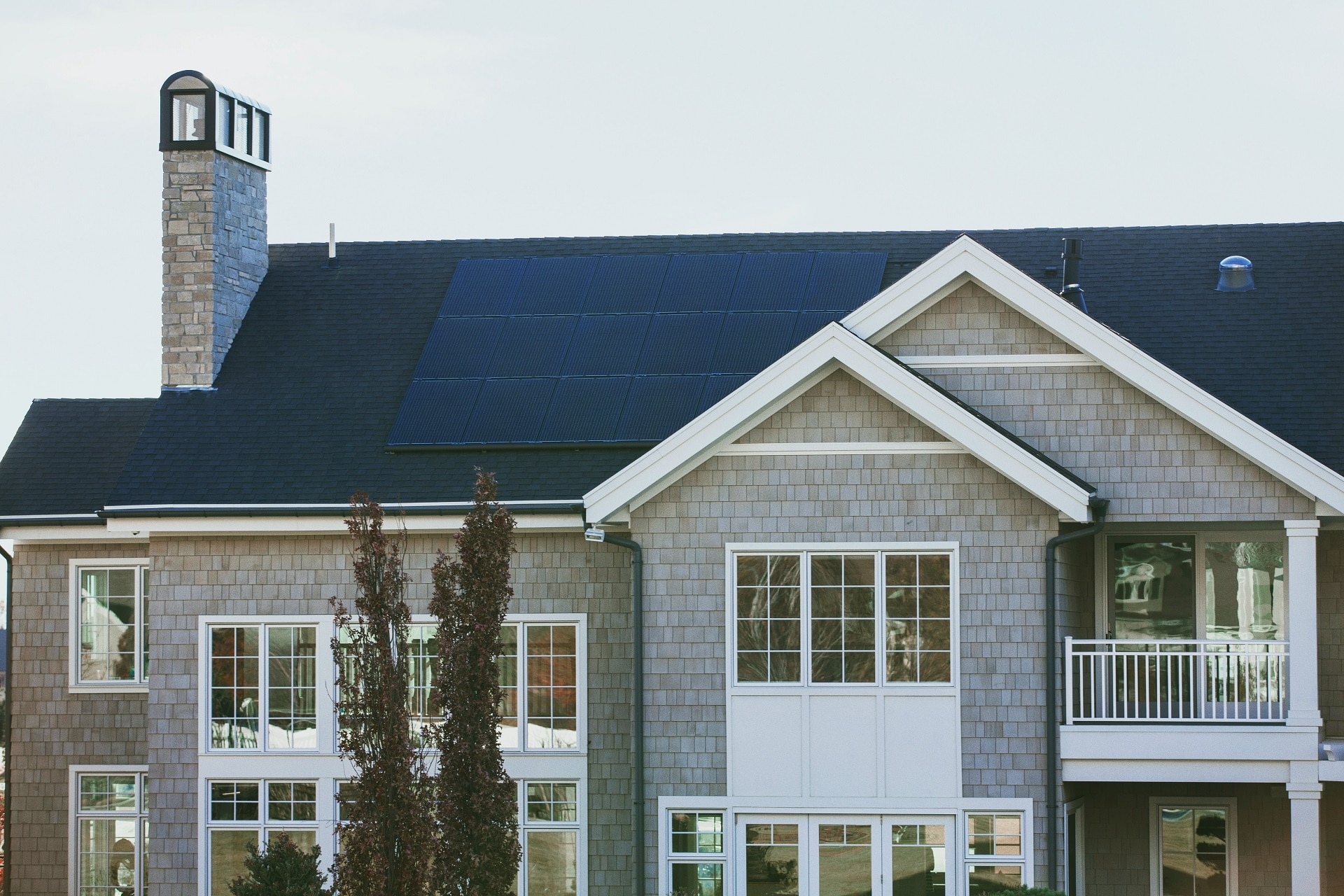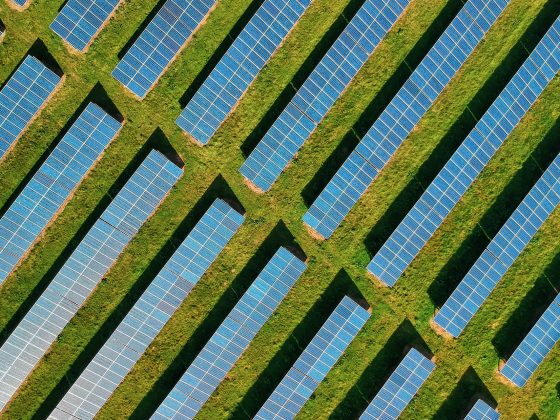Besides recycling, turning to renewable sources of energy is a must if we want to protect our environment and keep our natural resources. What’s great is that homeowners can also save while doing a good thing for our planet. According to solar energy statistics, its costs are at an all-time low. Therefore, it’s no surprise that solar power is the type of renewable energy with the most significant expansion. Here, you can learn all about the growth of the solar energy market, how it affects the environment and the economy, and much more!
The Top 10 Solar Energy Statistics for 2024
- 173,000 TW of solar energy radiates to the Earth constantly.
- The first solar cell was made of selenium wafers in 1883.
- In the US, there are currently almost 78 gigawatts (GW) of solar capacity installed.
- There are more than 2 million solar systems installed in the US.
- In California, 19% of energy is generated from solar systems.
- In 2019, there was an increase in the number of solar jobs in 31 states.
- In 2019, the solar industry employed almost 250,000 people in the US.
- At the end of 2018, there were 509 GWdc of cumulative solar power installations in the world.
- On the global level, solar PV (photovoltaic) generation increased by 22% in 2019.
- An average-sized residential solar system costs about $18,000.
Basic Solar Energy Facts
Here are some general facts about solar energy that you should know.
1. 173,000 TW of solar energy radiates to the Earth constantly.
(MIT)
The amount of solar energy hitting our planet is more than 10,000 times the total energy use in the world. Thus, solar energy is an amazing resource for sustainable energy. However, we need more technological developments to tap this energy in a cost-effective manner.
2. There are two basic types of solar panels.
(GreenMatch)
Today, everyone should know at least some basic facts about solar energy, such as the different types of solar panels. Photovoltaic (PV) panels use photovoltaic cells for the conversion of sunlight into electricity. Solar thermal panels are another type of solar panel. They absorb the sun’s heat, which is most commonly used for heating swimming pools or homes.
The History of Solar Panels
If you’re wondering about how solar panels came into being, then this section is for you.
3. Edmond Becquerel, a French physicist, discovered the “photovoltaic effect” back in 1839.
(EnergyMatters)
Edmond Becquerel discovered that sunlight could be converted into energy. One of the fun facts about solar energy is that this discovery of the photovoltaic effect is often considered the first step in the development of PV solar panels.
4. The first solar cell was made of selenium wafers in 1883.
(EnergySage)
It was made by Charles Fritts, who is considered the inventor of solar cells. However, modern solar panels are made of silicon, and they were invented in the 20th century.
5. In 1954, the first silicon solar cell was made at Bell Labs.
(EnergySage)
Another of the many interesting facts about solar energy is that Daryl Chapin, Calvin Fuller, and Gerald Pearson created the first solar PV cell made with silicon. Its efficiency was only 4%.
6. Vanguard 1 was the first satellite that used solar energy.
(NASA)
It launched in 1958, and it’s still orbiting the Earth. It’s interesting that it’s the oldest satellite that is still orbiting in space.
Solar Energy Statistics for the US
In this section, we’ll be discussing solar energy as it applies to the United States.
7. In the US, there are currently almost 78 gigawatts (GW) of solar capacity installed.
(SEIA)
This capacity can produce enough power for 14.5 million homes. Furthermore, the average annual growth rate of solar energy has been 48% over the last 10 years. This expansion of solar can be attributed to an increased awareness of the importance of clean energy and the lower costs, as well as the Solar Investment Tax Credit and other federal policies.
8. There are more than 2 million solar systems installed in the US.
(EnergySage)
According to solar energy growth projections, it’s estimated that there will be 4 million solar power systems in 2023, considering how solar energy is becoming more and more popular. We can only hope that in the future, more homeowners and building managers will add solar energy to their properties.
9. There are 744 solar power plants in California.
(California Energy Commission)
They are mostly located in the Mojave area, and their capacity is approximately 11,900 MW.
10. In California, 19% of energy is generated from solar systems.
(NREL)
This makes California number one in the US regarding solar energy deployment. Based on the solar energy stats, in the entire United States, about 2.3% of electricity was generated from solar systems in 2018. Even though this is still a small percentage, its growth is evident, considering that in 2014, it was only 0.7%.
11. Community solar is most prevalent in California, Colorado, Massachusetts, and Minnesota.
(EnergySage)
Community solar represents an opportunity for a homeowner to use solar energy without installing a solar panel system. Instead, solar energy is sourced from solar farms to hundreds of people. This is one of the most important facts about solar energy, especially for homeowners who don’t have conditions allowing them to install solar panels on their properties.
12. In 2019, there was an increase in the number of solar jobs in 31 states.
(The Solar Foundation)
Florida saw the highest increase in solar jobs. Other states that are in the top 5 when it comes to new jobs in the solar industry include Georgia, Utah, New York, and Texas. It’s interesting that the number of solar jobs in the US increased by about 156,000 in the period from 2010 to 2019, based on the recent statistics about solar energy.
13. In 2019, the solar industry employed almost 250,000 people in the US.
(SEIA)
In 2012, about 120,000 Americans worked in this industry, so this number doubled over seven years. Most of them worked in the installation sector, followed by manufacturing and trade and distribution.
14. Large corporations are making considerable investments in solar energy.
(SEIA)
Based on solar energy statistics in the United States, corporations are increasingly investing in green energy in order to save money on power generation. Apple is a leader in this field with 393 MW of solar capacity installed. It’s followed by Amazon (almost 330 MW) and Target (about 240 MW). Looking to the future, we can hope for many more green buildings.
Solar Energy: World Statistics
Here, we’ll be exploring solar energy from around the world.
15. At the end of 2018, there were 509 GWdc of cumulative solar power installations in the world.
(NREL)
Compared to the previous year, this represented an increase of 102 GWdc. It’s expected that this growth will continue in the following periods and that solar capacity will double by 2022.
16. China had the largest PV market in 2019, despite policy alterations and uncertainties.
(NREL, IEA, World Economic Forum)
Statistics on solar energy show that China is a leader in solar energy due to the massive solar energy farms they have there, including the largest in the world (situated in the Tengger Desert).
17. On the global level, solar PV (photovoltaic) generation increased by 22% in 2019.
(IEA)
From 2018 to 2019, the generation of electricity from solar PV increased from 585 TWh to 720 TWh. According to the Sustainable Development Scenario (SDS), it should reach 3,268 TWh by 2030. This means that an annual growth rate should be 15% on average.
Solar Energy Facts and Information About the Costs
In this section, we’ll be looking at the direct and indirect costs involved with solar energy.
18. An average-sized residential solar system costs about $18,000.
(SEIA)
In the last 10 years, the costs of solar system installation have considerably decreased. In 2010, an average-sized residential solar system cost $40,000, while in 2019, it was $18,000. Also, utility-scale prices have become competitive with other forms of energy sources, ranging from $16/MWh to $35/MWh.
19. For homeowners in the US, investments in solar systems typically start paying off after 3 to 8 years.
(EnergySage)
As expected, based on the solar energy information and facts, when you’ll reach a break-even point depends on your utility costs. For example, in some states, such as New York and Massachusetts, utility prices are pretty high, so homeowners from these states can achieve a break-even point in three years. On the other hand, most homeowners achieve it in 7–8 years, and it’s estimated that they can save up to $20,000 over the following 20 years.
Innovative Solar Technology: Solar Energy Fun Facts
Here, you’ll find some fun facts about solar energy to keep in mind for 2022.
20. Solar power systems can provide energy both during the day and night.
(EnergySage)
Thanks to the innovations in solar technology, homeowners can completely rely on this type of alternative energy. In fact, by installing solar systems with energy storage, they don’t have to worry about being without power after sunset.
21. There’s been an increasing trend of pairing solar systems with battery storage.
(SEIA)
In 2019, about 5% of solar systems were paired with battery storage in the US. However, the US solar energy statistics show that this pairing is growing in popularity, and it’s estimated that over 25% of solar systems will be paired by 2025.
22. Among other things, solar energy can power cars, trains, airplanes, and space stations.
(EnergySage)
A fun fact: the first flight around the world with a solar-powered plane was in 2016. A Swiss pilot and explorer, Bertrand Piccard, started this famous flight from Abu Dhabi—and this way, he showed that solar energy has enormous potential.
23. Today, many solar panels have an efficiency of 20% to 23%.
(EnergySage)
Thanks to quick development in solar technology, solar panel efficiency has dramatically improved. The solar energy efficiency facts indicate that only five years ago, it used to be between 17% and 18% at most. Considering lower costs and higher efficiency, it’s no wonder that the demand for solar power is rapidly growing.
24. The Ivanpah Solar Power System is the largest solar thermal energy plant in the world.
(Energy.gov, BrightSource)
It’s located in the Mojave Desert in California. The solar energy statistics indicate that its capacity is 392 MW, and it can generate enough electricity to meet the needs of over 140,000 homes in California during the peak hours of the day. In addition, it’s estimated that this solar power facility can reduce the emission of CO2 by over 400,000 tons per year. As you can see, solar energy fights global warming and protects our environment.
To Sum Up
Renewable energy sources, especially solar energy, are becoming more popular, which is great news for our environment. In addition to recycling, we should be investigating ways to use solar energy in order to protect our planet.
The solar energy statistics show that a number of countries around the world are increasing their solar capacity. In addition, the costs of solar panel installation are decreasing, so they’re becoming more available to homeowners. However, there’s still lots of room for improvement in solar technology, especially regarding the efficiency of solar panels.
FAQs
How many homes have solar panels in the U.S. as of 2019?
According to the survey from 2019 conducted by the Pew Research Center, only 6% of homeowners in the US had solar panels. However, it seems that the situation will get better soon since 46% of homeowners are considering installing solar panels in their homes. Solar-powered gardens are also growing in popularity.
(Pew Research Center)
Which country uses the most solar energy?
China has the greatest solar capacity in the world—over 175 GW. It’s followed by the US with over 62 GW and Japan with almost 60 GW. In Europe, the leading country regarding solar power capacity is Germany, with 45.9 GW.
(NREL)
How competitive is solar energy?
The cost of solar power is falling as more progress is made in renewable energy technology. The cheaper this source of renewable energy becomes, the more competitive it will become. The aim is to make it far more cost-effective than fossil fuel.
(Forbes)
What percent of the world’s energy comes from solar power?
Around 2% of the world’s electricity came from solar energy in 2019, according to solar energy statistics.
(Our World in Data)













